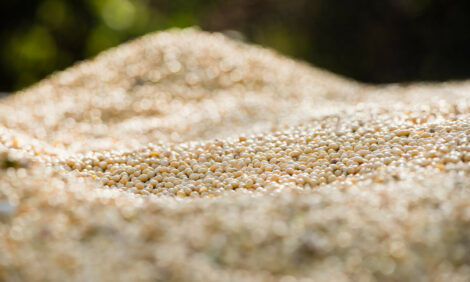



Hogs & Pigs Report a 'Mixed Bag'
US - USDA’s quarterly Hogs & Pigs report, released on Tuesday, was a bit of a hodge-podge, writes Economist Steve Meyer.Some numbers were above expectations, some below, with no real sense of direction for supplies in 2009.
That probably shouldn’t come as a big surprise given the huge shifts in economic incentives during 2008 and, now, the uncertainty that surrounds demand both at home and abroad.
The key numbers in the report can be found in Table 1.

Here are the highlights:
- The breeding herd stood at 6.081 million head on 1 December, which is 2.4 per cent lower than one year ago. That reduction compares to 2.6 per cent lower in September and an average pre-report estimate of -3.3 per cent. Significantly smaller US sow slaughter and, more importantly, lower US slaughter of US sows since August showed up in USDA’s numbers and was apparently discounted by the analysts surveyed ahead of the report. If feed and hog futures prices remain near current levels, I think the breeding herd will move back to year-ago levels by September – perhaps even by June. US producers’ strong balance sheets in 2006 and, in many cases, effective risk management have allowed them to weather the storm and they will move back to maintenance or growth mode quickly – provided feed costs do not get out of hand.
- The market herd inventory, reported at 60.627 million head, implies lower slaughter into 2009. The 2.1 per cent decline in this number was 1.4 per cent larger than the pre-report estimates. In addition, one has to carefully consider what might happen to imports of Canadian pigs over the next year. To wit, we must realize that the discrepancy between the 180+ weight category (-0.4 per cent) and December slaughter (-2 per cent vs. December 2007) was more than fully explained by reduced imports of Canadian market hogs and cull breeding animals. That kind of adjustment is going to be necessary throughout 2009, I think, and mandatory country-of-origin labeling (COOL) complicates the situation considerably. Figure 1 shows implied slaughter levels for 2009 and lists my adjustments to those levels for changes in imports from Canada. As I’ve said before, I don’t think COOL will be a huge factor, but the continuing financial stress on Canadian producers will cause pig and market hog imports to fall in 2009.

- The most curious number in this report is the September-November farrowings figure of 2.99 million litters, 6 per cent lower than last year. That number fits with the September-November pig crop at -3.7 per cent, given the increase in litter size, and the pig crop fits with the under-60-lb. inventory of -5.5 per cent, given the reduction in Canadian pig numbers. But none of those figures seems to fit the -2.4 per cent breeding herd: 6 per cent fewer litters out of a breeding herd that was down 2.6 per cent on 1 September and 2.4 per cent on 1 December? How many sows were aborted last summer? Is this just the result of selling high-priced sows in the summer and adding gilts in the fall? This latter scenario is my choice, but it remains to be seen if fall pig production really fell that much. I’ll believe it for now, but I’ll also be watching Q2-09 slaughter very closely. Remember, the 120-179-lb. category in the September report that looked wrong the day of publication and, based on fall slaughter totals, turned out to be wrong? There is a bit more logic behind this farrowings number, but it still looks screwy to me, so we’ll see.
- Smaller and smaller reductions in farrowing intentions will lead to larger supplies (or at least smaller reductions of supplies) in Q4-09. In fact, my calculations have US pig output about equal in Q4-09 to Q4-08, with the only reduction coming from Canadian imports. Supplies will be large again at the end of the year and will put significant pressure on prices.
What does this mean for prices? It looks like a tough first quarter, good second and third quarters, and another tough fourth quarter in 2009. That sounds familiar, doesn’t it? My price forecasts and those of the University of Missouri, Livestock Marketing Information Center and Iowa State University appear in Table 2. There continues to be more disagreement among the forecasts than has been the case in the past, especially regarding Q2 and Q4 of 2009.

Note also that futures prices are no longer carrying large premiums to our price forecasts based on fundamental supply and demand analysis. That makes forward pricing recommendations much more difficult. It is not clear at present whether producers would be better off or worse off locking in prices offered by lean hogs futures contracts. December and early January are historically seasonal lows, so my current thought is to sit tight and see if a spring cash rally will carry futures along and offer better pricing opportunities in March or April.
Best wishes for a happy and prosperous 2009! 2008 has been a challenge to say the least and some of the factors that made it challenging remain. But draw joy from your journey, enjoy your family, friends and colleagues and, remember, there are more important things in life than pigs, corn and profits. Happy New Year!
Further Reading
| - | You can view the USDA Quarterly Hogs and Pigs Report - December 2008 by clicking here. |






